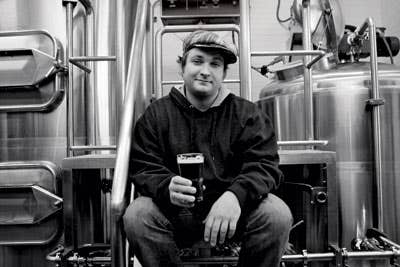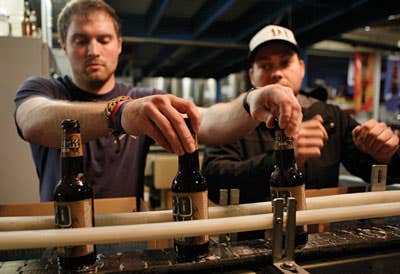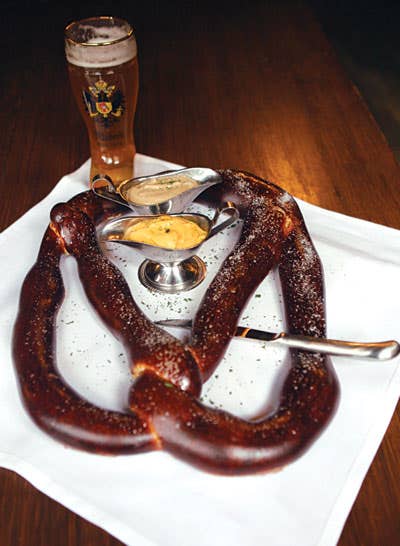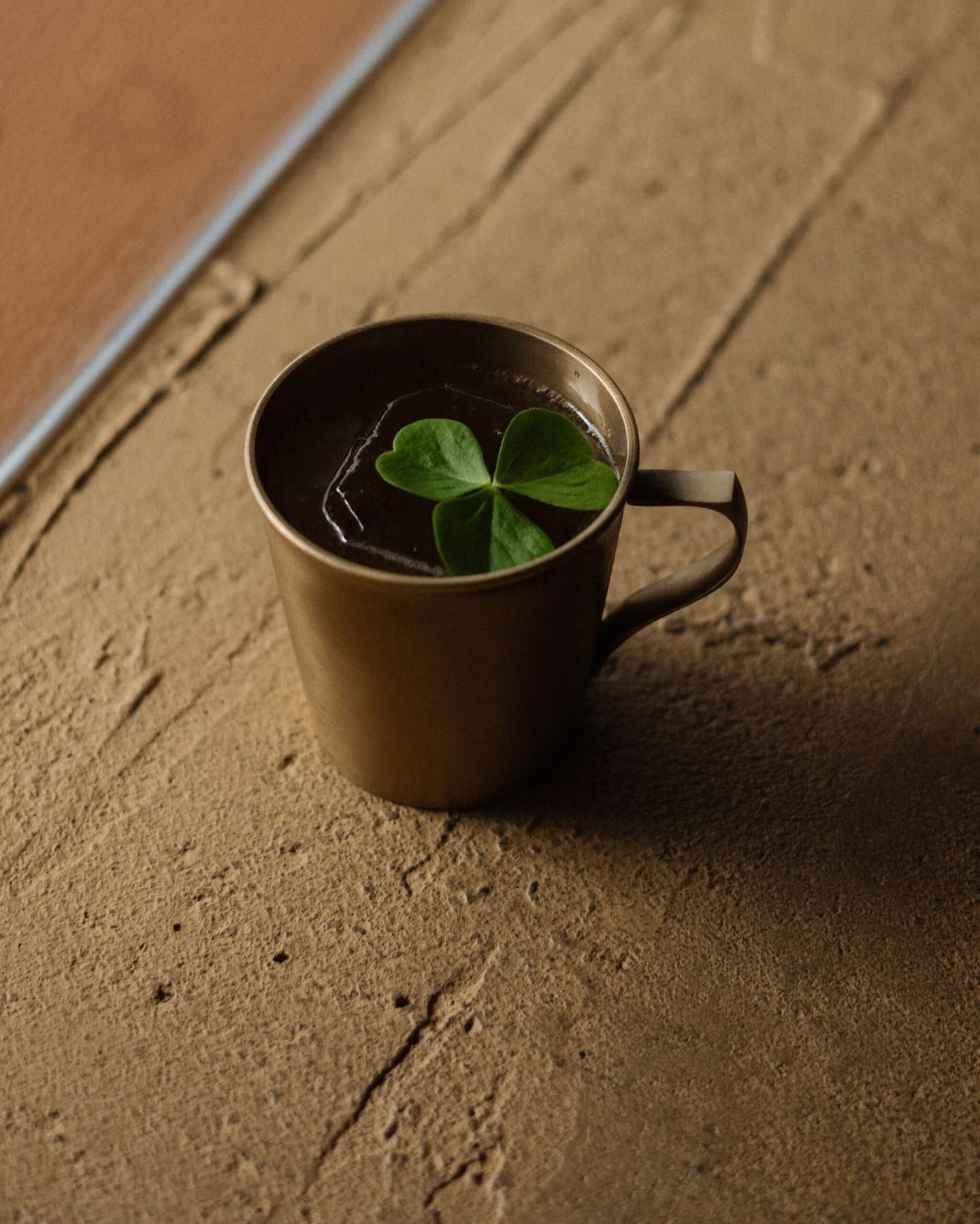
In Milwaukee, America's great lager-making tradition lives on
It's visible everywhere on the Milwaukee landscape: in the ribboned-globe logo painted on buildings that once were Schlitz brewery-controlled saloons; in statues depicting King Gambrinus, the patron saint of beer; in the monumental ruins of Pabst Brewing Company and the still-bustling MillerCoors brewery; in the lagering tanks of a group of small but scrappy modern-day microbrewers. Despite the late 20th-century shuttering of all but one of its big breweries, Milwaukee, Wisconsin, America's "Brew City," remains awash in beer, specifically lager, the bottom-fermented, cold-brewed beer that originated in medieval Bavaria.
I grew up in Philadelphia, where, in 1840, a Bavarian immigrant brewed what is widely considered America's first lager; the beer I came of age drinking was Yuengling Traditional Lager, brewed in eastern Pennsylvania by the nation's oldest operating beer company. Hoppy craft ales get more attention nowadays, but I'm attracted to lager's crisp effervescence, and I'm fascinated by its history. The traditional German beverage became the beer of the American masses, the industrial drink against which the modern craft ale movement defined itself. Today, American lager's past— and future—is nowhere more apparent than in the nation's most Germanic city.
"Milwaukee was the frontier, an area open to settlement when Germans started coming to the States in the 1840s," local historian John Gurda told me when I paid the city a visit recently. We were sitting in Hooligan's, an East Side pub, chatting over pints of toasty Maibock lager from Capital Brewery, in nearby Middleton. "In the 2000 census, people of German descent made up 38 percent of Milwaukee's population," Gurda continued. "That's the country's largest concentration." As if to illustrate his point, when I crossed the street to visit Von Trier Tavern, I watched patrons sip from steins beneath an elkantler chandelier that once lit the home of brewer Frederick Pabst, who hailed from Saxony.
When Pabst assumed co-ownership of his father-in-law's Best Brewery, in 1864, he joined the city's rising class of German-American beer-makers: Valentin Blatz of Blatz Brewing, the Uih-lein brothers of Schlitz, Frederick J. Miller, whose brewery is now MillerCoors. The Welsh brewers who preceded them had made ale, a style of beer whose yeast sits on top and ferments quickly at relatively warm temperatures. Ales were thick and murky back then; they easily soured. The new brewers' lager (German for "to store") was made with yeast that settled to the bottom while the beer aged in ice-lined caves, developing clarity and malty heft. Originally, lagers were brown, due to use of darker barley malts; in Germany, styles ranged from dry dunkel (dark) to rich doppelbock (double bock). But as lighter malts were developed, one style came to prevail in the States: American pilsner, a pale, sparkling lager.

photo by Beth Rooney
the bottling like at Milwaukee Brewing Company
Initially, Milwaukee's were "small breweries with big dreams," said Gurda, but they soon expanded through modernization, aggressive marketing, and luck— the temperance movement and taxation drove alcohol consumption from whiskey to beer, and the 1871 Chicago fire knocked out competition and opened up a key market. By 1874, the soon-to-be-renamed Pabst Brewing Company was the nation's largest beer-maker. Beer gardens were popular destinations featuring German food and entertainers like the woman who lit herself on fire and dove from a platform into the Milwaukee River.
Today, that woman graces the label of the Milwaukee Brewing Company's Flaming Damsel Real Blonde. "Our core brands are based on quirky stories from an entrepreneurial time in the city's history," Jim McCabe, the craft brewery's president and founder, told me as he poured me the copper-colored lager. We were shouting over the hum and clink of the bottling line in his brewery in the Third Ward neighborhood. The Flaming Damsel was crisp and bright, but with an ale-like earthiness and hop aroma. Next we sampled the Hoptoberfest. Along with a caramel sweetness, it offered unconventional floral, pepper, and citrus hop notes. These ale-like "transition" lagers, as McCabe's brewmaster, Rob Morton, calls them, make sense from an outfit founded as a brew-pub: Ale is often the first choice of craft brewers because it's cheaper and faster to make. Also, ale brewers can use multiple varieties of hops to impart flavor, while tradition demands just one hop and one malt when making an elemental German lager like pilsner.
"Anyone can brew ale," declared Dave Reese, the beer-maker at one of the local brewpubs, Horny Goat Hideaway. "Lager demands finesse." He's working on a project he hopes will rectify a longtime imbalance. "Last year, while we were pouring our own stuff at the bar, we were the city's number-three account for Miller Lite," Reese said. "I want to make my own low-calorie lager. But we're not gonna use corn syrup like they do at Miller."
It's a common complaint: Though craft beer is gaining ground, domestic industrial beers still make up more than 70 percent of all beer consumed in the U.S. And though craft brewers wax nostalgic about Milwaukee's once-great breweries, when it comes to making lager, they're not looking back. "The older brewers had their thing: American pilsner. It's fine beer, but it's one-dimensional," owner Russ Klisch told me when I visited his Lake-front Brewery, in an old power plant on the Milwaukee River. There, brewery tours end with a group rendition of the theme song from Laverne & Shirley, the TV show about two Milwaukee gals who worked the bottling line at the fictitious Shotz Brewery. "Give us any chance, we'll take it / Give us any rule, we'll break it / We're gonna make our dreams come true / Doin' it our way!" It feels like an anthem for Klisch himself. He and his crew brew innovative beers like a fruity Cherry Lager using tart cherries grown in Door County, in northeastern Wisconsin, and the unfiltered Local Acre Lager, loaded with organic Wisconsin barley and fresh hops. "Expanding the tradition," said Kilsch, "is where we come in."

photo by Beth Rooney
a Bavarian-style pretzel at Mader's German restaurant
At Sprecher Brewing Company, in the suburb of Glendale, they take a more historical approach, raiding the German beer-making tradition to come up with beers that seem incredibly fresh today. Founded by former Pabst supervisor Randy Sprecher in 1985, the brewery is dedicated to the classic styles of lager that Sprecher came to love while stationed in Germany during a stint in the military: spicy Special Amber; discreetly sweet Oktoberfest; meaty doppelbock; chocolatey Black Bavarian. These substantial lagers are the very inverse of a beer like Miller Lite. And, as I discovered while quaffing Sprecher's Black Bavarian and feasting on wursts, goulash, and a huge pretzel at Mader's, a German restaurant downtown, they pair deliciously with hearty foods.
But then, throughout my visit, lager showed off its food-friendly side. At the Milwaukee gastropub owned by the Green Bay—based Hinterland microbrewery, they use Maple Bock, a smoky lager brewed with maple syrup, as a pairing and as a marinade for wood-fired pork belly. According to Hinterland owner Bill Tressler, "The more people are getting into drinking craft beers, the more we have to make beers for all occasions."
In Milwaukee, that extends to breakfast, as I discovered one morning at a Sendik's supermarket, by watching Craig Peterson of Buffalo Water Beer Company promote his sole beer, a lager, the citrusy Bison Blonde. He was handing out samples to folks stopping in to buy hot deli ham on a white roll, a local Sunday-morning staple. One customer cried out, "My favorite foods! I love you!" Peterson was thrilled. "It's an honor to stand on the shoulders of those who came before us, the Blatzes and the Schlitzes," he told me. "We have a city that has a legacy that's diminished. If we can bring that back, that will feel better than anything."
Keep Reading
Continue to Next Story










